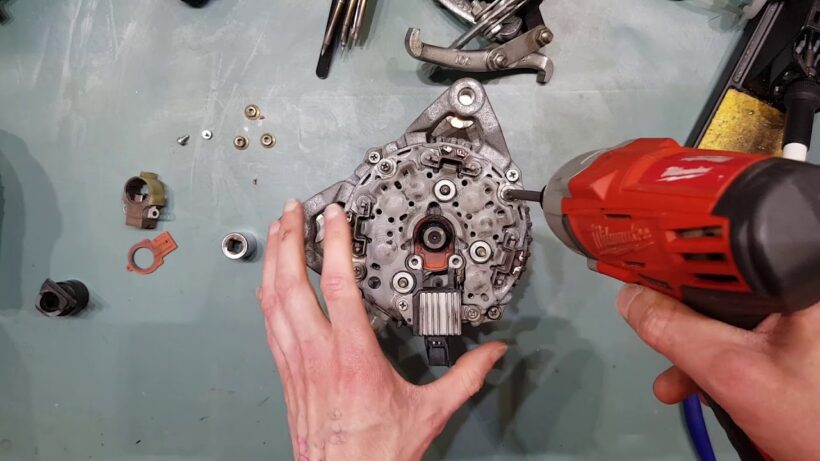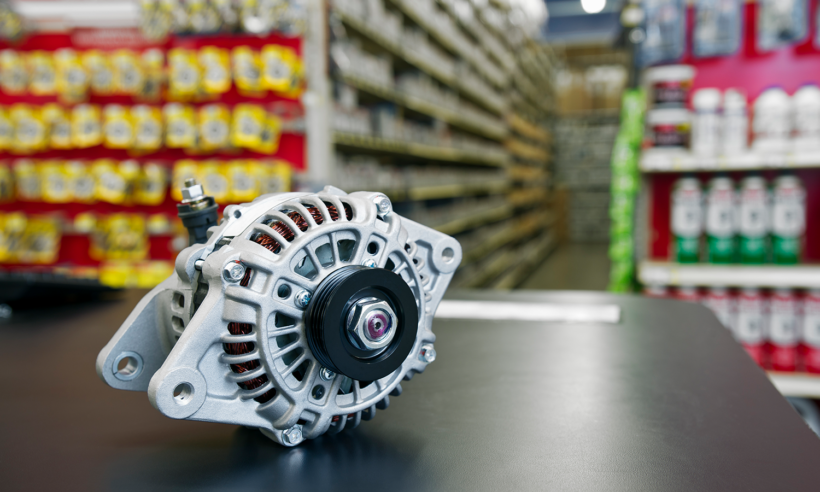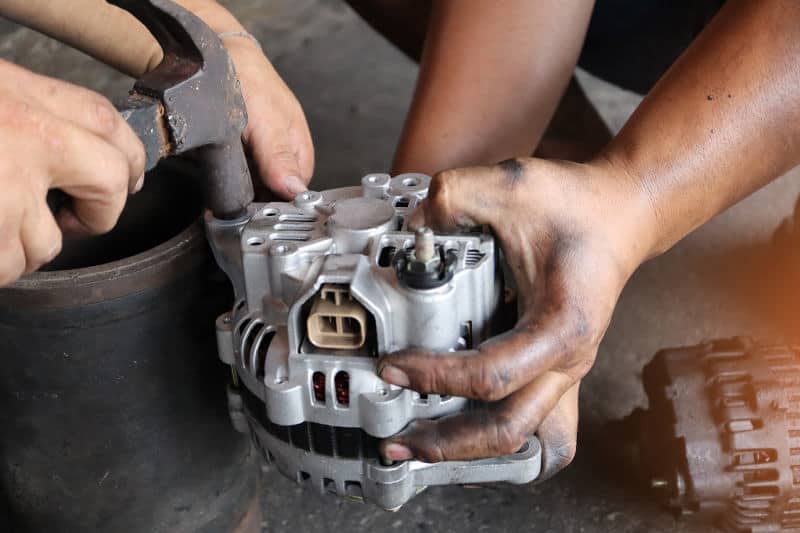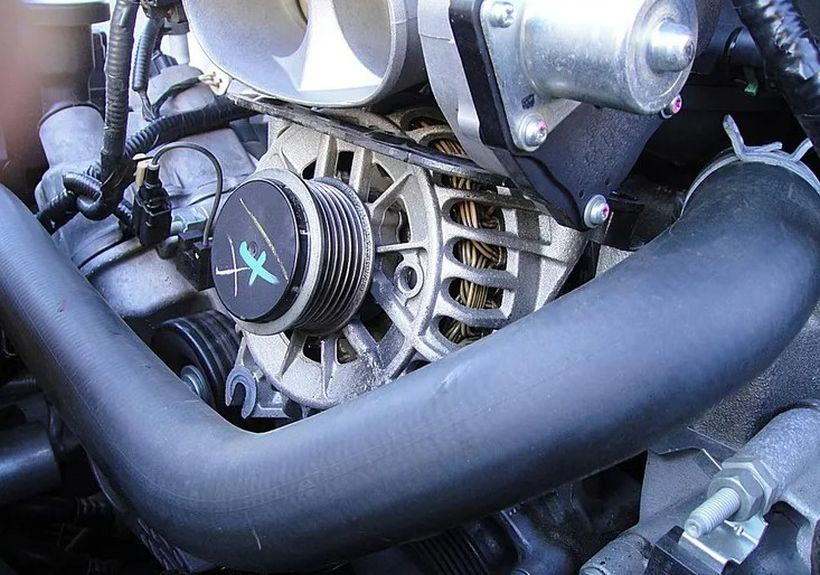Anyone that’s never looked into what makes their vehicles run is going to be shocked at the fact that any modifications they make to their vehicle might require a complete change in their stock parts. That’s especially true when it comes the stock alternators they have powering whatever they happen to be driving. Whenever they install an expensive radio or switch out your headlights, they’re going to want to buy high output alternators to make them run.
The reason for that is about as simple as it can get when you’re dealing with customizing any vehicle. The amount of power that it needs to run has just been changed and the stop alternator is likely never enough to make that happen. If you’ve upgraded any component, you have to adjust the power coming from your engine at the same time.
What is a High Output Alternator?

Very simply put, a high output alternator is an alternator that creates and put out higher amperages of power than the stock model that it’s replacing. That makes it possible to provide more energy to the different parts of your vehicle that need it. That brand-new radio or set of headlights that you just installed is going to be calling for more power and your stock alternator won’t be able to provide it.
What a stock alternator leaves you with is a vehicle that’s not getting the power that it needs to run while the engine is on. That will lead to headlights that dim and brighten as you drive around or sit idle. It can also damage the brand-new parts that you’ve just used to customize your ride.
Types of High-Output Alternators

High-output alternators are used in a variety of applications, from tractors to boats and race cars. Each type of alternator can offer different benefits and capabilities, so it’s important to understand the differences between them when selecting one. Generally, the types of high-output alternators can be broken down into three categories: brushless, serpentine-belt pulley, and custom-built systems.
Brushless Alternators: Brushless alternators are self-regulating. They utilize permanent magnets to eliminate the need for regular maintenance and adjustment, as well as require less energy to operate than traditional designs. This type also typically offers higher output than traditional alternatives.
Serpentine Belt Pulley Alternators: Serpentine belt pulleys can either be direct-drive or serpentine belt configurations and boast low noise levels, powerful flow rates and relatively large diameters for smoother performance at higher speeds or under heavy load conditions.
Custom-Built Systems: Custom-built systems typically require more energy input to get the maximum output desired in relation to engine size or usage. In terms of design flexibility, custom-built systems offer greater versatility with outputs ranging from 50 amps to over 200 amps depending on requirements.
Make the Alternator part of your Upgrade
When you decide to upgrade any part of your vehicle then you always want to add a high output alternator as part of your overall project to make sure you get what you’re after. You don’t have to be an expert on alternators, or vehicles, to understand what’s going on. An upgraded part is going to require more power than the stock part you got with the vehicle.
Installation of High Output Alternators
Installing a high-output alternator requires the utmost care and precision. This type of alternator is meant to replace a regular-sized alternator in order to be able to handle increased electrical loads, such as additional power accessories or higher-wattage sound systems. When replacing a regular-sized alternator, professional installation is highly recommended. The following steps provide basic guidelines for installing an alternator and must be done by qualified technicians:
Prior to installation, check the battery terminals for corrosion or damage and clean all connections with a wire brush.
Disconnect the negative cable from the battery ground port and keep it away from any other part of the vehicle until the installation process is complete.
Remove all of the wiring connected to the old alternator except for the negative cable going directly from stationary parts directly connected to it, such as heavy gauge wire that goes through the firewall. Secure these wires aside so they do not short-circuit anything during the installation process and so they are ready for reconnection after the new alternator has been installed.
Unbolt old belts from the alternator pulley, remove the pulley itself if applicable, and set aside before removing the old alternator assembly from the vehicle en bloc with mounting bracket or gasket attached if applicable.
Place the new alternative in place of the old one while reusing all necessary bolts and washers if applicable, including the mount bracket and all rubber gaskets present during the removal process, then bolt the pulley back into place tight enough not too loosen quickly but not over tightened either as this can cause bearing damage over time resulting in premature failure of new high output accessory part installed onto a vehicle at later date!
Maintenance and Troubleshooting

If your car isn’t starting or is having trouble holding a charge, it’s possible that there may be an issue with your high-output alternator. Troubleshooting issues with your alternator can help you identify any potential problems before they become serious or expensive to repair. Common problems associated with high output alternators include battery drain from the excessive current draw, voltage spikes and drops due to poor connections between battery and alternator terminals, low idle control system problems that cause inability to start the engine, loose wiring connections which cause uneven charging performance and metal dusting on drive pulleys that leads to belt slipping.
If you do experience an issue it’s important to diagnose what could be causing it as soon as possible so you can restore power in your car quickly and reliably. Using diagnostic tools designed specifically for troubleshooting high-output alternators can help simplify this process so you can quickly get back on the road again.
If you want to get the most out of your brand-new part then you have to get it the power it needs to run properly. A high-output alternator is what you need to make that happen. It should always be part of your vehicle upgrade project.

